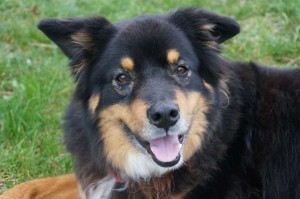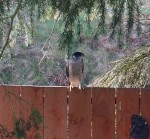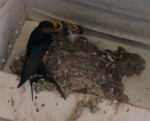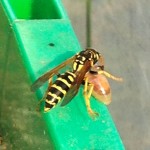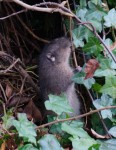[Link back to Site Analysis; Link back to Permaculture Journey]
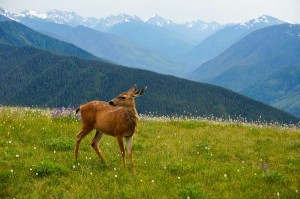
The Olympic Peninsula is quite unique in the species of animals that call this their home. Common are black bear, cougar, mountain goats, hoary marmots, mountain beavers, and the Roosevelt Elk for which Sequim has become famous. Closer to Barbolian Fields, the Dungeness River and Hurd Creek to the west serve as a wildlife corridor for many animals that go back and forth between pastures and sources of water. At the river, one might see beavers, 9 species of salmonids, and untold numbers of birds that stand nearby to go fishing. There is plenty of cover along these water bodies, as well as protected habitats in nearby Dungeness Bay to the north and the Olympic National Park to the south. Wild animals frequently seen on or nearby the Barbolian Fields site include deer, coyotes, raccoons, eagles, herons, owls, hawks, and many others. They usually travel along the perimeters of the property in early morning or evening hours (a family dog keeps them at bay during the day).
Since we have started our path toward more sustainable ecosystem gardening, the increase in animals – both in diversity of species and in sheer numbers – especially birds and insects – has been nothing short of phenomenal. And it keeps growing more and more every year! We do not eradicate a perceived “negative” creature because we recognize we do not fully understand the interrelationships in the natural world. For example, bald-faced hornets – thousands of them – took over the Willow Room for awhile this summer. They were feeding on the aphids and quite possibly the ants. We let them be. It got cold; they left. We have seen numerous different kinds of bumble bees and other pollinators that we might never have otherwise appreciated. Granted, the moles and voles still do a fair amount of damage, but they also have their role in the ecosystem. An overabundance of tent caterpillars in the spring was an indicator that things were out of balance; there were not enough predators to check their populations, although the caterpillar problem was rampant across the region this last year. Even so, we are taking measures to plant more plants that are hosts to predators and see whether it can make a difference. We plant a few extra squashes for whatever is eating them; we share our abundance, knowing that all things must eat, and most things in nature also give in return.
The following are a few recent photos and lists of some of the species we see at Barbolian Fields (by no means complete):
Mammals
- Shrews, moles, voles, mice, rats, water rats, and their kin
- Chipmunks and squirrels
- Weasels
- Coyotes
- Deer
- Bats
Birds
- Eagles, red-tailed hawks, cooper’s hawks, nighthawks, Peregrine falcons, turkey vultures, owls
- Canadian geese, snow geese, trumpeter swans, herons, mallard ducks
- Woodpeckers, thrushes, tanagers, grosbeaks, orioles, flickers, jays, towhees, and robins
- Blackbirds, crows, ravens, and starlings
- Swallows
- Hummingbirds
- Quail
- Chickadees, nuthatches, creepers, wrens, juncos, siskins, bushtits, rosy and gold finches, and lots of sparrows
Reptiles & Amphibians
- Snakes! Lots and lots of garter snakes!
- Newts and salamanders
- Little green frogs, larger brown frogs, and toads
Insects & Bugs
- Many many kinds of bees, wasps, yellowjackets, hornets, flies, and flies that disguise themselves to look like bees
- Mosquitoes and dragonflies
- Grasshoppers
- Lacewings and many beneficials
- Beetles and centipedes: lots of big black beetles, striped ones, and many unknown species, ladybugs
- Ants, earwigs, fleas, and other little bugs
- Spiders: hobo spiders, brown recluses, wolf spiders, daddy longlegs, and many garden varieties
- Tent caterpillars (not my favorite)
- Moths and Butterflies, including swallowtails, monarch, sulphur, white cabbage, red admiral
Mollusks
Slugs and snails
Domestic Animals:
As for domestic animals, we have had at various times in the past 28 chickens, 47 angora rabbits, and 5 llamas, in addition to numerous dogs and cats and other domestic household animals (chinchillas, parakeets, goldfish, gerbils, turtles, and boa constrictors – plural – but let’s not go there). We are down to 1 dog. We are currently encouraging wild animals, mostly wild birds and pollinating friends, to take up residence. We would like to do some traveling, free of responsibilities and returning children with pets. It is not a bad goal. But eventually we will settle back down, and it would be nice to have a few chickens again. We miss the fresh eggs. And maybe some ducks. They are cool. And maybe a couple of rabbits, because I miss my bunnies, but certainly not 47. Balance in all things.
